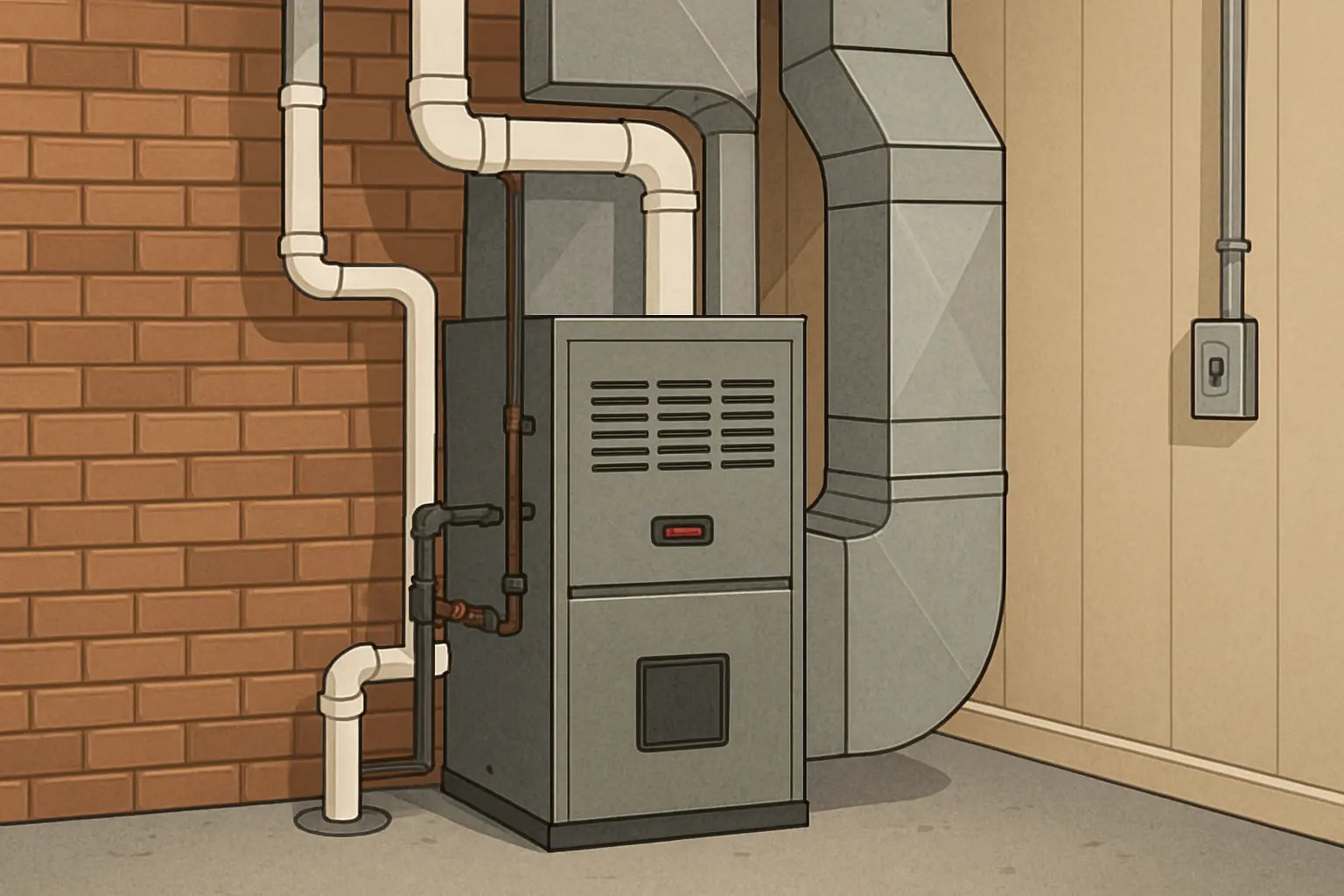That Moment When the Furnace Stalls…
You wake up to a freezing house, check the thermostat—it’s set, but nothing's happening. Classic furnace limbo. Do you shell out for a technician to patch it up again, or is it finally time to say goodbye and invest in a new one?
If this sounds familiar, you’re not alone. Thousands of homeowners face the repair vs. replace decision every year. Making the right call isn’t just about fixing the heat—it’s about safety, comfort, and long-term savings.
Let’s break down exactly when a repair makes sense, when replacement is smarter, and what it’s all going to cost you.
1. Age of the Furnace: The First Big Clue
The average gas furnace lasts about 15 to 20 years if well maintained. But once it crosses the 15-year mark, repair costs start piling up and efficiency drops.
Ask yourself:
-
Is my furnace over 15 years old?
-
Have I made multiple repairs in the last two winters?
-
Does it run longer and louder than it used to?
If you’re checking these boxes, you might be throwing good money after bad. According to Energy.gov, older units can have AFUE ratings as low as 56–70%, while modern systems easily hit 90%+, meaning major energy savings over time.
2. Frequency and Cost of Repairs
Here’s a simple math trick:
If the cost of a repair multiplied by the age of your furnace exceeds $5,000, replacement is likely the better option.
Example:
$500 repair × 15-year-old furnace = $7,500 → Replace!
The National Association of Home Builders (NAHB) offers a helpful life expectancy chart for HVAC systems, showing how certain parts degrade over time—like heat exchangers and blower motors. If these parts start going, expect big bills.
3. Energy Efficiency: The Hidden Cost You’re Paying
Older furnaces guzzle more fuel to produce less heat. That not only impacts your comfort but your wallet. If you notice your utility bills creeping up despite similar usage, your furnace could be the culprit.
Upgrading to a high-efficiency ENERGY STAR® furnace with a 95%+ AFUE can cut heating costs by up to 30%, according to ENERGY STAR.
And let’s not forget—modern systems are often quieter, better at maintaining even temperatures, and come with smarter thermostatic controls.
4. Safety Hazards: The Non-Negotiable Factor
If your furnace shows signs of a cracked heat exchanger, stop reading and call a professional right away. This can lead to carbon monoxide leaks, which are deadly.
Other red flags that require immediate attention:
-
Yellow furnace flames instead of blue
-
Soot around vents or burners
-
Frequent headaches or flu-like symptoms among your household
The CDC warns that carbon monoxide poisoning can be fatal and often goes undetected. If your furnace poses any safety risk, don’t gamble—replace it.
5. Comfort Level: Hot Spots, Cold Corners, and Noise
A working furnace should maintain even heating throughout your home. If you’ve got:
-
Rooms that never heat up
-
Units that run constantly
-
Loud cycling or rattling sounds
…it’s a sign that either your furnace is improperly sized or on its last legs. Constant cycling puts extra wear on the motor and can even lead to short-cycling damage.
Inconsistent heating usually means the furnace can no longer keep up—another clear nudge toward replacement.
6. Environmental Impact and Rebates
Beyond personal comfort, older furnaces have a bigger carbon footprint. Newer models use sealed combustion, modulating burners, and smart controls to drastically reduce emissions.
Better yet? State and federal rebate programs can help offset the cost of a new system. DSIRE provides a searchable database of available rebates in your area for energy-efficient upgrades.
7. What Does a New Furnace Cost?
Let’s talk dollars. On average:
-
Basic gas furnace install: $3,000 – $4,500
-
High-efficiency models: $5,000 – $7,500
-
Zoned heating or smart add-ons: +$1,000 or more
Compare that to repairs like:
-
Blower motor replacement: $400 – $1,200
-
Ignitor: $150 – $300
-
Heat exchanger: $1,500 – $3,000
Forbes Home breaks it down with helpful averages and upgrade options.
While replacement may feel expensive up front, lower utility bills and fewer repairs add up over time. Bonus: new units often come with 10-year warranties on parts and lifetime warranties on heat exchangers.
8. When to Just Repair and Wait
Repair might be your best move if:
-
The furnace is under 10 years old
-
It’s still under manufacturer warranty
-
The repair is minor and infrequent (like a thermostat or flame sensor)
-
You’re planning to move in the next 1–2 years
Sometimes a well-timed repair gives you another reliable season while you budget for a replacement.
Final Thoughts: Making the Smart Call
Choosing between repairing or replacing your furnace isn’t always black and white—but it is a decision you don’t want to delay.
If your furnace is aging, underperforming, or causing safety concerns, replacement is often the smartest long-term play. On the flip side, simple, infrequent repairs might keep things humming for a few more years.
Looking for a range of efficient, budget-friendly furnace options? Check out our full collection of furnaces here—we’ve got high-efficiency models that fit nearly any home setup, and our tech support team is always here to guide you.
Need more installation and troubleshooting tips for your furnace? Visit my ultimate guide right here!
Until next time,
- Mark, your go-to HVAC tech







